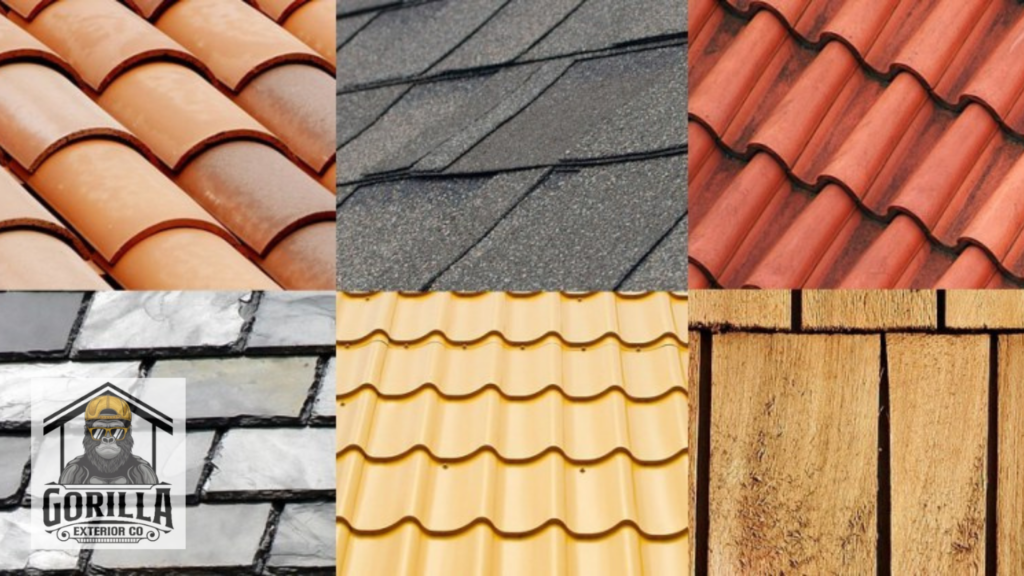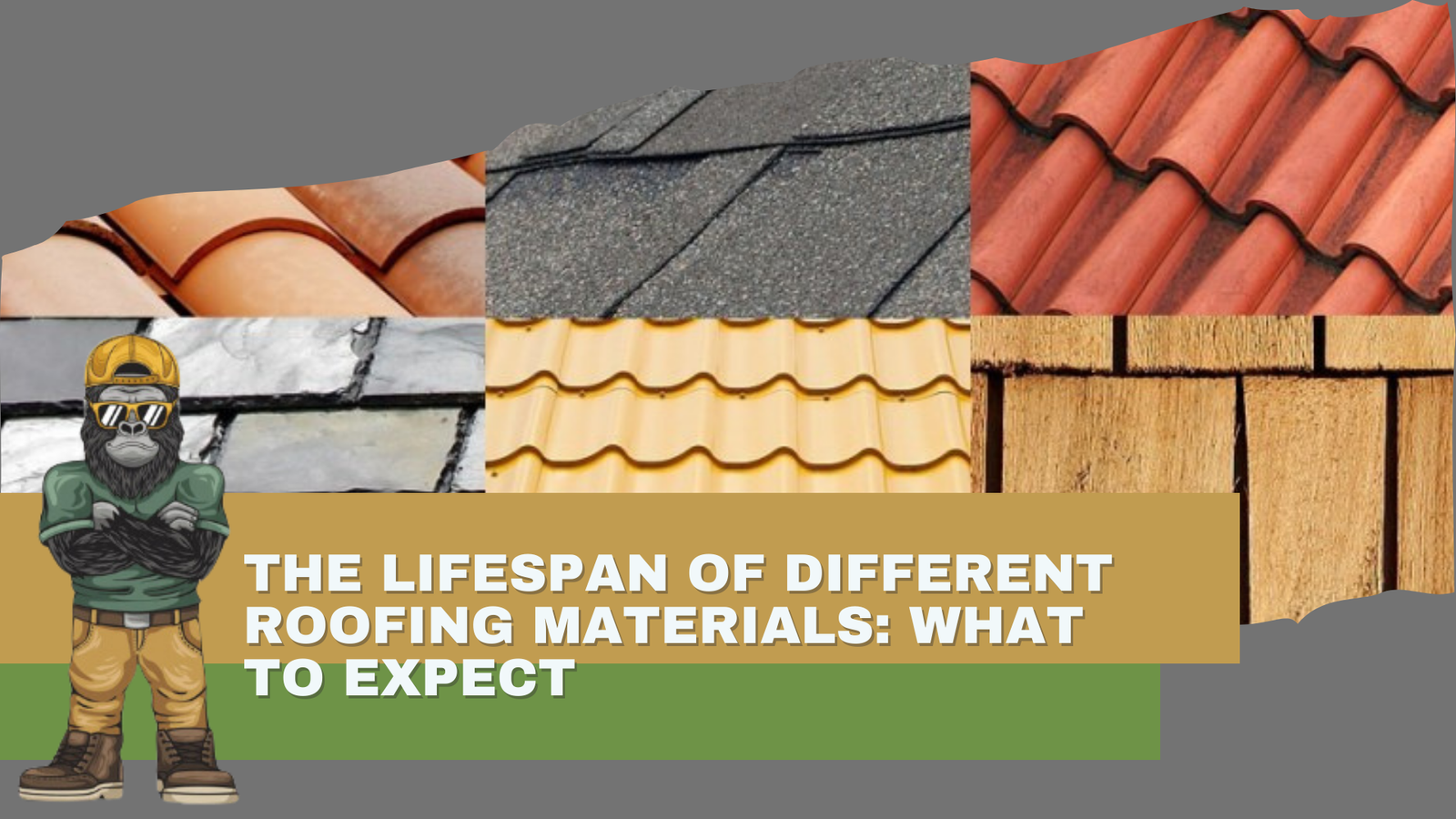Understanding the Lifespan of Various Roofing Materials


The lifespan of your roof is one of the most important factors to consider when choosing a roofing material. A well-constructed roof not only protects your home from the elements but also enhances its value and curb appeal. However, different roofing materials offer varying levels of durability, maintenance needs, and cost-effectiveness. Whether you’re considering asphalt shingles, metal roofing, slate, or other materials, understanding their expected lifespan can help you make an informed decision.
1. Asphalt Shingles: Affordable and Popular
Lifespan: 15 to 30 Years
Asphalt shingles are the most commonly used roofing material due to their affordability, ease of installation, and variety of colors. There are three main types:
- 3-Tab Shingles: Last 15-20 years with basic protection.
- Architectural Shingles: More durable, lasting 20-30 years.
- Luxury Shingles: Heavier and thicker, lasting up to 30 years.
Pros:
✔ Budget-friendly
✔ Wide variety of styles
✔ Easy to replace
Cons:
✘ Shorter lifespan compared to other materials
✘ Vulnerable to wind and hail damage
✘ Requires regular maintenance
Regular maintenance and proper ventilation can extend the life of an asphalt shingle roof. However, severe weather conditions can significantly reduce longevity.
2. Metal Roofing: Durable and Energy-Efficient
Lifespan: 40 to 70 Years
Metal roofs are becoming increasingly popular due to their long lifespan, energy efficiency, and durability. Common metal roofing options include:
- Aluminum: Rust-resistant and lasts around 40 years.
- Steel: Coated with zinc for protection, lasting 50 years or more.
- Copper & Zinc: Premium options lasting 70+ years with proper care.
Pros:
✔ Extremely durable and weather-resistant
✔ Energy-efficient, reflecting heat and lowering cooling costs
✔ Fire-resistant
Cons:
✘ Higher upfront cost
✘ Can be noisy during rainstorms
✘ May dent from hail or fallen branches
A properly installed metal roof can last a lifetime, making it a great long-term investment for homeowners.
3. Wood Shingles and Shakes: Rustic Appeal with Proper Care
Lifespan: 30 to 50 Years
Wood roofing materials such as cedar shingles and shakes offer a natural, rustic appearance. While aesthetically pleasing, they require more maintenance than other roofing materials.
Pros:
✔ Beautiful, traditional appearance
✔ Naturally insulating
✔ Can last 50 years with proper care
Cons:
✘ Requires frequent maintenance and treatment
✘ Vulnerable to mold, rot, and insect damage
✘ Fire risk unless treated with a fire-resistant coating
Proper sealing and maintenance can prevent premature decay and extend the lifespan of a wood roof.
4. Clay and Concrete Tiles: Long-Lasting but Heavy
Lifespan: 50 to 100 Years
Clay and concrete tiles are incredibly durable, often lasting over a century when properly installed. They are most commonly seen in Mediterranean, Spanish, and Southwestern-style homes.
Pros:
✔ Highly resistant to fire, rot, and insects
✔ Extremely long lifespan
✔ Excellent insulation properties
Cons:
✘ Heavy, requiring reinforced roof support
✘ Expensive initial cost
✘ Can break under heavy impact
Despite their high upfront cost, clay and concrete tiles offer an excellent return on investment due to their durability and low maintenance requirements.
5. Slate Roofing: The Longest-Lasting Option
Lifespan: 75 to 200 Years
Slate roofs are among the most durable roofing options, with some lasting for centuries. This premium roofing material is commonly used in historical and luxury homes.
Pros:
✔ Unmatched longevity
✔ Resistant to fire, rot, and insects
✔ Elegant and timeless appearance
Cons:
✘ Very heavy, requiring additional structural support
✘ Expensive material and installation costs
✘ Fragile—can break if walked on incorrectly
For homeowners looking for a lifetime roofing solution, slate is one of the best options available.
Factors That Affect Roof Longevity
Even the most durable roofing material can suffer from premature aging if not properly maintained. Several factors influence how long your roof will last:
1. Climate and Weather Conditions
Extreme weather, including hail, high winds, heavy rain, and snow, can shorten the lifespan of any roof.
2. Installation Quality
A poorly installed roof can fail much sooner than expected. Always hire a reputable roofing contractor for installation.
3. Maintenance and Inspections
Routine inspections and maintenance can prevent minor issues from turning into major problems.
4. Ventilation and Insulation
Proper attic ventilation prevents moisture buildup and extends the life of the roof.
5. Roofing Underlayment
A high-quality underlayment provides an additional layer of protection against leaks and water damage.
How to Choose the Right Roofing Material for Your Home
Selecting the right roofing material depends on several factors, including:
- Budget – Asphalt shingles are the most affordable, while slate and metal are more expensive.
- Climate – Metal and tile roofs perform well in extreme conditions.
- Home Style – Choose a material that complements your home’s architectural design.
- Longevity – Consider how long you plan to stay in your home before investing in a long-term roofing solution.
FAQs About Roofing Material Lifespans
1. What is the longest-lasting roofing material?
Slate roofs can last 100-200 years, making them the most durable roofing material available.
2. How often should I inspect my roof?
It’s recommended to inspect your roof at least twice a year—once in the spring and once in the fall—as well as after any major storm.
3. Can I extend the lifespan of my roof?
Yes! Regular maintenance, cleaning gutters, repairing minor damage, and ensuring proper ventilation can extend your roof’s lifespan.
4. How do I know when it’s time to replace my roof?
Signs include missing or curling shingles, frequent leaks, sagging areas, and excessive granule loss from asphalt shingles.
5. What is the most cost-effective roofing option?
Asphalt shingles are the most budget-friendly option while still offering a decent lifespan of 15-30 years.
Final Thoughts
The lifespan of different roofing materials varies significantly based on the material, climate, maintenance, and installation quality. Choosing the right roof is a crucial decision that impacts both the value and protection of your home. Whether you prioritize cost, durability, or aesthetics, understanding what to expect from each roofing type can help you make the best investment for your property.





